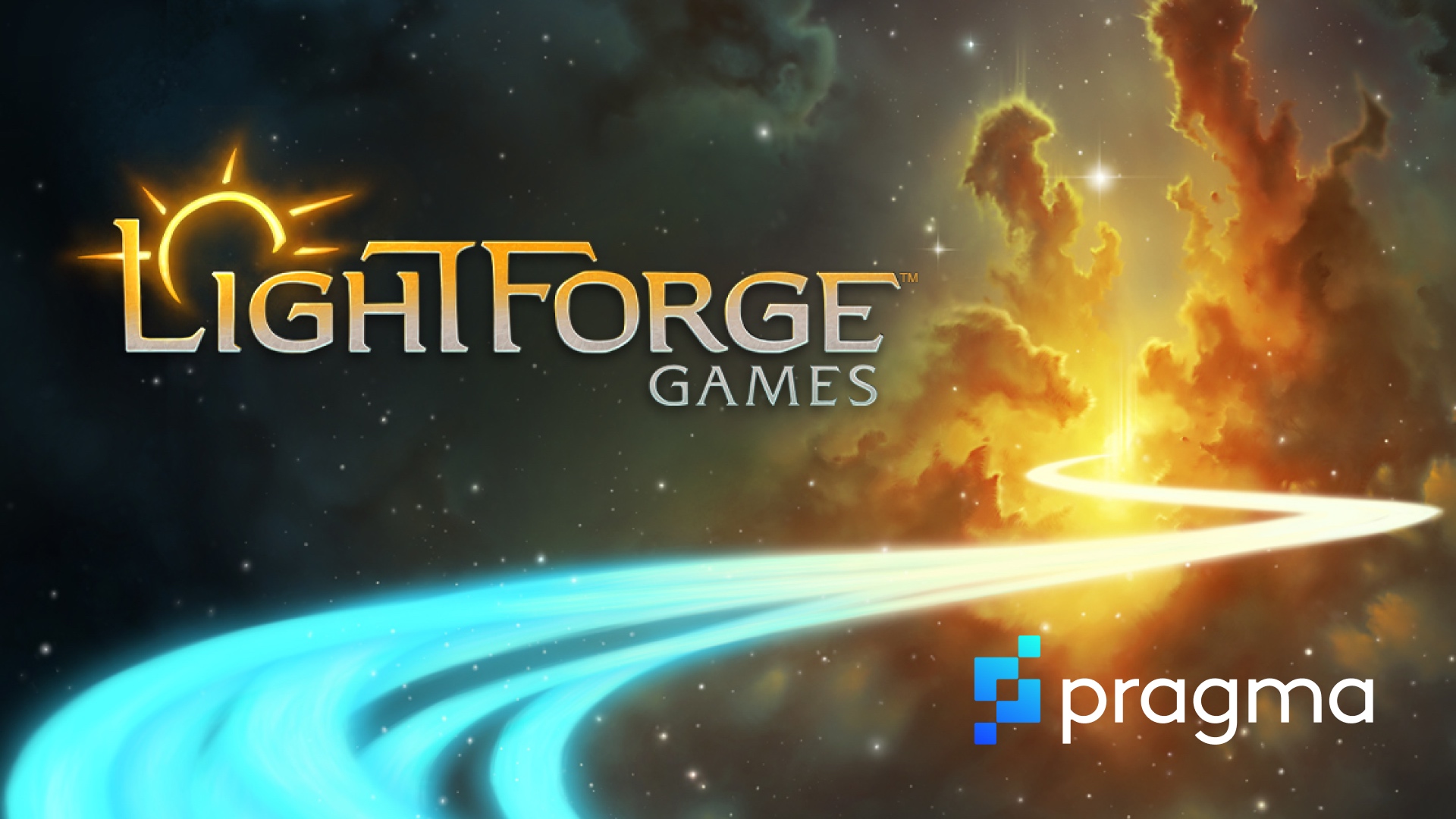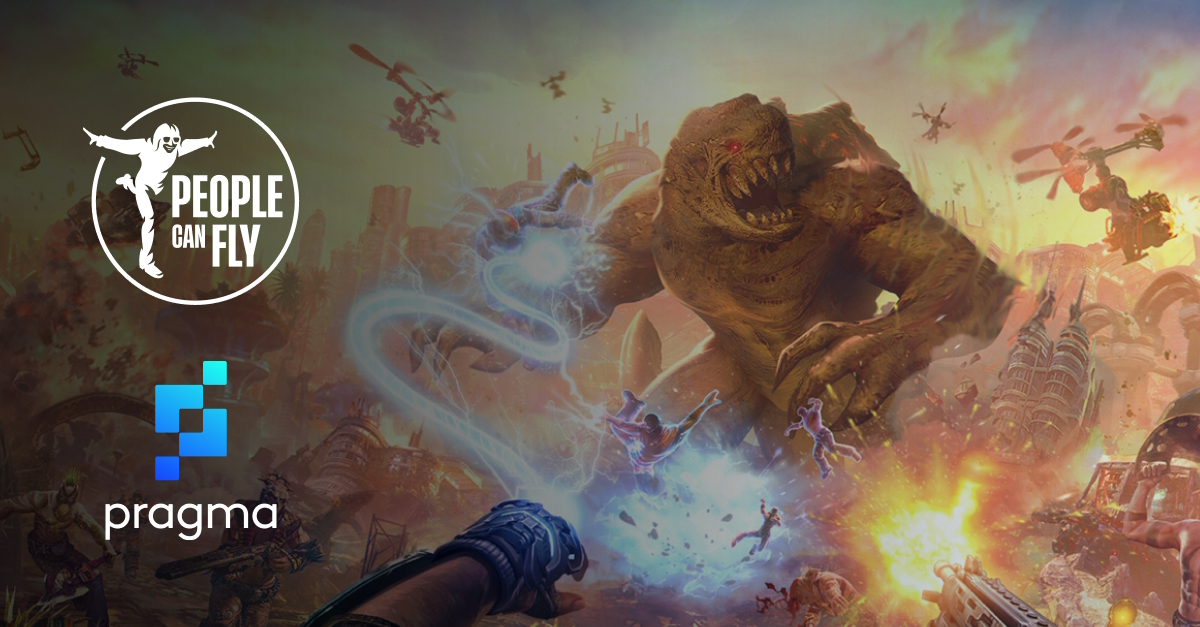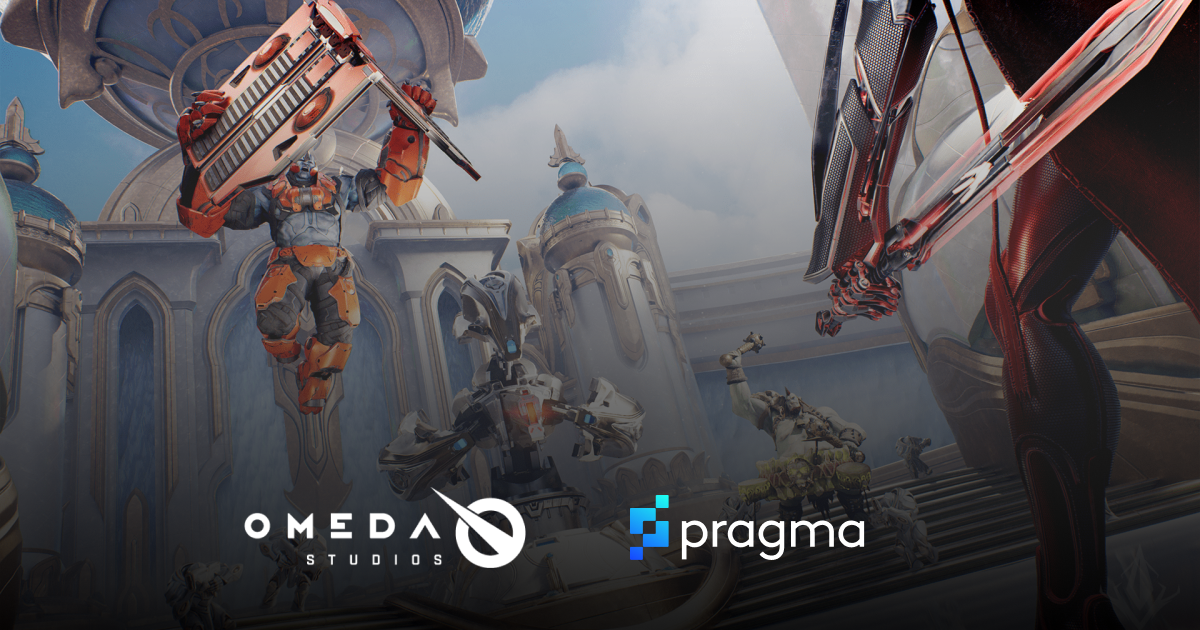There was a moment when I began to doubt my approach to role-playing Lilly Peacock. The doubt bubbled up maybe 20 minutes into an hour-long play session of Lightforge Games' still-early-in-development, still-unnamed social- and narrative-driven RPG.
Peacock, my character, brutally backstabbed a potential ally, and then (somewhat ineptly) parkoured his way across a graveyard toward another enemy—only to bounce into a candelabra and set himself ablaze. It seemed like everything was going wrong.
But then Lightforge Games CEO Matt Schembari, our game's Guide, indicated a clutch of enemies staring at Peacock in disbelief—and pointed out that I could set them on fire.
That’s when it all gelled. What followed was a completely deranged battle that combined familiar video game RPG elements with the sort of outrageous behavior found in a good tabletop session. It involved a lot of cultists, flames, rabbits—and even some flaming rabbits.

It was a perfect example of how a tabletop game that lives in the players’ imagination and is guided by another person can go unexpected places that no computer-based RPG can, no matter how many options the developers program.
More importantly, it shows how game development is evolving. Where once graphics defined what people looked at and played, these days there's increasing interest and focus on how well a game handles its online experiences.
Online
“Over the last 10 years, I've had deep conversations with both Amazon and Epic about how I truly believed in this idea that the future isn't in the graphics of engines. It's in the online connectivity,” said Schembari.
Schembari, who worked at Blizzard Entertainment and Epic Games, said he’s seeing a new sort of player now focused beyond a game’s graphics to things like the efficiency and scalability of a game’s online support.
Where at one point players decided to buy a game based on whether it was driven by, say, Unreal Engine, Schembari believes they now are starting to recognize and form an affinity for a game’s backend provider like Pragma, which supports Lightforge’s upcoming title.
“I think we’re already there, to be perfectly honest, and I actually feel strongly about this,” he said.
Dónal Mac Carthy, Lead Backend Engineer at Lightforge Games and a former Senior Software Engineer at Epic Games, considers that affinity an important element for new studios to consider as they work out how they’re going to build their games.
“If Pragma has reliable, scalable games that have good online performance and good netcode, that's a good affiliation for us to have,” he said. “Something that I think about sometimes is whether we are affiliating or partnering up with people who have good reputations—not just in the business world, but with our playerbase.”
“There is an opportunity with the games that Pragma has helped to launch before us to say, ‘Look how smooth this is. Look how good this is. We're partners of Pragma, so you can rely on our game to work right.’”
The Idea
Before there was a game to play, before Pragma stepped in to help bring Lightforge's vision to life—before there was even a Lightforge at all—there was an idea.
“I spent about nine years at Blizzard and about four at Epic,” Schembari said. “This particular game that we're working on is something that's been percolating in my head for, like, the last 10+ years—how to bring the magic of tabletop RPGs to a mainstream video game audience.”
He said he wanted to explore the idea in more depth but was convinced that it would never be greenlit inside of a big studio.
Schembari was exploring his options when he got in touch with Blizzard founder Mike Morhaime and former VP of Blizzard Esports Amy Morhaime. The two formed Dreamhaven as an indie publisher and developer in 2019, and Schembari had some encouraging early conversations with the pair.
“I sent them an early kind-of game design document,” Schembari said. "It was a ridiculous 30-page document that at the very top said, in bold red letters, ‘This probably isn't business viable. I just think it's a neat idea.’”
Two weeks later Dreamhaven got back in touch with Schembari to tell him they thought it had the potential to be a viable game, and asked him to work with the company's business people to come up with some approaches. That led to the studio's first round of funding in 2020, which consisted of $5 million from a collection of investors including Dreamhaven.
In 2020, Schembari teamed up with an impressive mix of other experienced devs to form Lightforge Games. The studio was founded by Schembari, Nathan Fairbanks (Epic, ZeniMax Online, BioWare), Dan Hertzka (Epic), Marc Hutcheson (Epic and Blizzard), and Glenn Rane (Blizzard).
The studio came together around Schembari's idea, something he boiled down into a single elevator pitch.
“We're boldly claiming that we are making a new genre—a Collaborative Storytelling Role-Playing Game or CSRPG," said Schembari. “It's an RPG where gameplay is augmented by collaborative storytelling, like you would find in tabletop games like D&D. You make things up as you go, invent the story together with your group.”
Collaboration definitely factored heavily during my play session with Lightforge. First we built out our characters. Then Schembari, the Guide for our adventure, started us off with an icebreaker, asking each player (gathered over a video call) why they were heading out on this journey.
Next Schembari asked us where we wanted to head. We decided to brave the Mausoleum—but before we started, the game asked us to vote on what sort of creatures we planned to encounter and how we planned to take on the quest, whether fighting, stealth, or talking our way through. These decisions help shape the way the quest starts, but not necessarily how it goes.
With this particular quest, Schembari loaded up the graveyard map he'd created prior to the session and asked us to help build out the adventure a bit, adding enemies, creatures, and even trees and structures to the existing map. This isn’t a necessity—a Guide can have the whole map crafted ahead of time—but it enabled us to see what the process looked like.
Creation in Lightforge's game is fairly simple. A menu allows you to select and place different objects, dragging them into the map and dropping where you want. You can also modify them or add effects. This was how we ended up with dozens of rabbits…and a large, flaming rabbit. The lunacy of our design turned the existing cultists into the worshipers of some elder bunny god.
The whole point of the game is to recapture the experience of in-person tabletop RPGs. “It's getting together with your friends and laughing,” said Schembari. “Like, that’s the core gameplay of Dungeons & Dragons really, right?”
Gameplay is turn-based. The game shows your available abilities and movement options, but it’s ultimately up to you and the Guide to discuss how you plan to use them. Then you roll a die—a giant 20-sider appears and rolls around the terrain—and then the game acts out the result using your character. For example, when I parkoured across the map, he teleported to his new spot and became engulfed in flames.
The whole thing ran seamlessly on Pragma Backend Game Engine. After an hour of playing it, it started to make sense why the people at Lightforge didn’t want to use an out-of-the-box service for their online support.
Pragma
“This is a relationship,” he said. “It’s not just a case of, 'We use their SDK.'”
Matt Schembari, Lightforge Games CEO on the Pragma Backend Game Engine
The decision to use Unreal Engine for Lightforge's first game wasn’t a difficult one to make. “Our expertise and the network is super, super valuable. It's like a superpower for us,” Schembari said.
The decision to use Pragma for the game's online services was also obvious.
Mac Carthy said that the decision to "buy and not build" came from the team’s game development history. “A lot of our team came from Epic beforehand," said Mac Carthy, "So we have deep, deep experience with building from scratch for games, and it's an awful lot of work. As a startup company in particular, we need to be focused on what’s important to our company—and that is the game, not building out a game engine.”
Lightforge initially decided to test out Pragma and see how it went—but soon the team was integrating Pragma's SDK into their game. It essentially allowed the team to spin up a server and verify that people had permission to access the game. The service allowed them to quickly get authentication, matchmaking and multiplayer to work.
“It gave us a taste of what actually working with Pragma was going to be like inside our game, and what using the SDK would be like inside Unreal Engine,” Mac Carthy said. “It was pretty clear we'd be able to replace the two or three sort-of standalone pieces that we had built.”
While that ease of use was important, what really won the team over was an early interaction they had with Pragma, the company.
“We went to Pragma and said, ‘Hey, we’ve got questions about [a specific aspect of the SDK].’ Two or three days later they came back and explained their rationale and thought process, and I found myself nodding and agreeing with about 75% of what they said.” “In terms of how we were thinking about these problems, we were quite aligned with Pragma.”
That cultural alignment was very important to Lightforge, and a major reason why they decided to use Pragma.
Non-traditional multiplayer
“The rules of our game don’t really lend themselves to a traditional video game-like setup of a strict dedicated server or peer-to-peer server,” said Mac Carthy.
What that means is that there’s really no cheating in their game, according to Schembari.
“For example, we give you a button that you can use to kill any monster you want at any time,” he said. “At the end of the mission we ask whether you succeeded on the quest or not. There’s a lot of power in the players’ hands, so cheating doesn’t mean the same thing in our game.”
A typical online multiplayer game like Call of Duty or Fortnite spends a lot of energy ensuring players are not cheating, but it simply isn’t a concern with Lightforge.
“I went to LA and sat down with some of the team at Pragma to talk about how our game didn’t exactly fit the mold of these two very common ways that games are developed,” Mac Carthy said. “We saw an opportunity because players can’t really cheat in our game. They’re only cheating themselves out of the fun of the game, out of their storytelling.”
The Pragma Backend Game Engine is essentially a powerful blank canvas that allowed LightForge to build their game as-designed without fighting a black-box style backend.
He said Pragma’s CTO, Chris Cobb came back with interesting suggestions regarding what Lightforge could do with their technology and SDK.
“They were just ideas I never would have come up with on my own,” he said. “Having that conversation with Pragma about that particular feature changed how we thought about our client and server architecture, and it's pretty foundational to the game.”
It also means that, from Lightforge’s perspective, they don’t need to run as many dedicated servers, which ultimately should keep the cost of running the game down. That’s just one of many ways Pragma, working alongside Lightforge, enabled the studio to save money and development time, or helped implement custom services.
For Lightforge, that level of support and partnership isn’t unusual in the teams they work with—but that’s because they refuse to work with teams who don’t live up to that high expectation.
“It’s almost like survivor bias,” said Schembari. “We work with the partners that are good partners, and so that's maybe why it's not unusual—but it's very beneficial.”
Testing
Among the things that make Lightforge view Pragma as a good partner is its approach to load testing, an important element of any online game as it steadily marches from early game tests toward potential alphas, betas, and even Early Access.
“When we talk about releasing and launching, we’re talking about 'How many players are we going to have concurrently in our game?'” Mac Carthy said. “I came to Pragma to talk about the best way to load test.”
He said the Pragma team assured them that they had already load-tested five times the numbers that Lightforge were hoping to test. That information enabled Lightforge to remove some of the safety latches they'd built around scalability limits and such—and meant they didn’t have to spend money with AWS testing, he added.
While there is no public timeframe for the launch of Lightforge's game, Pragma is already thinking through how to support the title when the day comes. Pragma Solutions Engineer Shane O’Brien said they will typically begin meeting weekly with partners for months ahead of launch, with meetings increasing in frequency as the day draws closer, until eventually they meet daily.
“We're in that room together, figuring out what Pragma needs to do, what needs to be done when the next update comes out," said O'Brien. "Is there any feature you need in that update? Can we get some of those bits to you sooner? And then it's just a case of setting up what the escalation policy is. Who's monitoring? Who's available on both sides if something does go wrong? It's a very collaborative effort.”
Perhaps surprisingly, a server outage on launch day isn’t among the things Schembari says he’s stressed about. “That's not a big stress—and I think part of it is having good partners that I feel confident in.”
Instead, Schembari worries about how the game will sit with players. Will it resonate? Will they like it?
“That’s actually nice in many ways—that the stressor is about the game, the design of the game and the art of the game, rather than, 'Will it just explode because of technical issues?'” he said.
State of RPGs
Lightforge's idea to blend the spontaneity of live tabletop RPGs with the robust graphics, effects, and memory of a computer game couldn’t come at a better time.
RPGs in general are going through a Renaissance, of sorts. So-called "Actual Play" shows—where people gather around a table to play Dungeons & Dragons or other tabletop RPGs—have become popular on podcast and video streaming services. And the arrival of Baldur’s Gate 3 in 2023 took the video games world by storm, breaking sales records and garnering critical acclaim and awards for its deep dive into role-playing.
While those successes help validate the direction Lightforge is taking, they can also make the team feel a bit antsy.
“We need to be out. I definitely feel that way,” Schembari said. “I definitely think that there are some major tailwinds in the industry that we’re the beneficiaries of. There's just so much good content out there for folks to watch or play. Critical Role is the number one paid channel on all of Twitch and Baldur's Gate was absolutely massive.
“It’s introducing so many more people to this idea that role-playing and role-playing games can be something else. I think that when they see our game it's not going to seem so different, so unfamiliar.”
The reaction to Baldur’s Gate 3’s seemingly endless in-game choices and possibilities struck a particularly strong chord with Schembari.
“I love Baldur’s Gate, I will never disparage Baldur’s Gate—but at the end of the day it is still a decision tree that has millions of nodes, maybe even trillions of nodes,” he said. “But it’s still a tree you have to follow. For us, it’s entirely fuzzy, it’s entirely unpredictable, because you can have literally anything happen.
“One time, we had players decide they wanted to defeat a dragon by challenging it to a dance competition," Schembari continued. "If that wasn't programmed into Baldur’s Gate then that’s not a choice you could possibly make—but in our game, you can literally choose that if that's what you're going to do.”
Which brings us back to the adventures of a group of rogues who found themselves taking on a secretive group of bunny-worshiping cultists.
While no dance-offs transpired, the session did end with one player throwing flaming bunnies at the cultists (setting some alight) while another player, fully engulfed in flames, parkoured his way through the rest of the baddies. A particularly savage natural 20 allowed another player to deduce that the whole group were actually worshiping a man dressed in a bunny suit and not a true elder god bunny.
It was a bunch of silliness that was fully powered by the collective creativity of the players and our Guide, empowered by the yet-to-be-named game running invisibly in the background.
Partners
It’s unclear when Lightforge Games' CSRPG will see the light of day, but it is clear the studio feels unimpeded by a need to reinvent technology to support their unique ideas.
Pragma has been a huge help in that regard, a backend provider that Lightforge sees more as a partner than an expense. Mac Carthy says he’d likely have more gray hairs if Lightforge hadn’t decided to work with Pragma early on.
“I think that there is a strong possibility that we would be where we are right now, but we would be built on significantly shakier foundations. We would have had to take shortcuts—and we know what happens when you take those shortcuts.”
Learn more about Project O.R.C.S. at https://playprojectorcs.com
About the Author: Brian Crecente runs consulting agency Pad & Pixel, LLC. He founded Kotaku, co-founded Polygon, and was the video game editor for Rolling Stone and Variety. Before his time in video game journalism, Crecente was an award-winning newspaper reporter who covered crime and public safety for more than 15 years.







